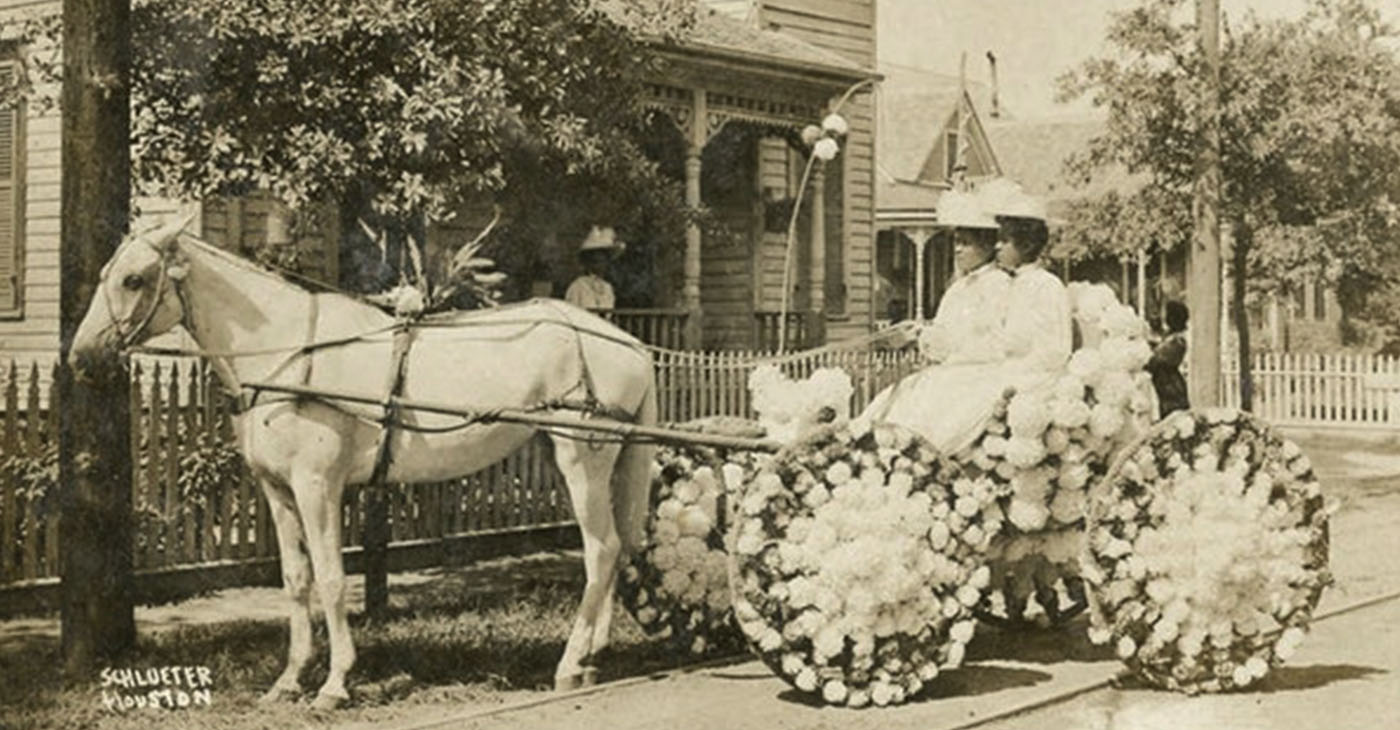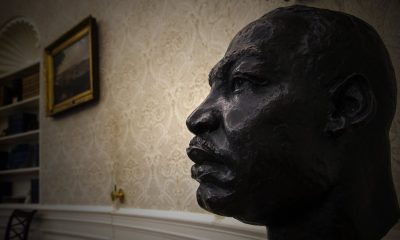Black History
COMMENTARY: Juneteenth Holiday Touches Collective Memory of African American: It Deserves Honor
Dec. 31, 1862, then, would become the Watch Night of all Watch Nights. Ninety-nine days earlier, Pres. Abraham Lincoln had announced his intention to free people enslaved in most of the Southern states. It was sometime late the morning of Jan. 1, 1863, when Lincoln finally signed the document known as the Emancipation Proclamation and word immediately crossed the country, tapped out in Morse code on telegraph wires.

By Wanda J. Ravernell
It was a long time coming.
For centuries, they had prayed, fought and died seeking freedom from slavery.
The day they had awaited they called ‘Jubilee.’
Depending on where they resided, the day of ‘Jubilee’ came in fits and starts. In New Hampshire, the last slave was freed in 1853, New York in 1827 and Pennsylvania by 1810.
Enslaved people vicariously celebrated the 1791 revolt in Haiti leading to the first Black republic in the Western Hemisphere in 1804. The 1834 manumission of Blacks in Jamaica was another milestone.
During the slave era, New Year’s Day was dreaded as it was when enslavers settled their debts with the lives of their ‘property.’ New Year’s Eve, then was not celebrated, but rather spent in fervent prayer that their loved ones not be sold away.
Dec. 31, 1862, then, would become the Watch Night of all Watch Nights. Ninety-nine days earlier, Pres. Abraham Lincoln had announced his intention to free people enslaved in most of the Southern states. It was sometime late the morning of Jan. 1, 1863, when Lincoln finally signed the document known as the Emancipation Proclamation and word immediately crossed the country, tapped out in Morse code on telegraph wires.
But news of Jubilee didn’t reach Texas.
It would be two and half years and more than two months after the Confederate army surrendered to a Union Army that included Black men that soldiers brought the news to Galveston, Texas, on June 19, 1865.
The date would be contracted to Juneteenth and become the most widely and continuous celebration of the end of slavery in the U.S. Other states had Freedom Day or Emancipation Day, but those observations had died out as, for the sake of assimilation, Blacks distanced themselves from that dark past.
But not Black Texans, who took their custom with them during the Great Migration that began in earnest in 1915.
In Western cities with sizeable Black populations Juneteenth observations sprang up without the sanction of local government. (Texas would declare Juneteenth a statewide holiday in 1980.)
San Francisco (48 years), Berkeley (35 years), San Jose (41 years) and Vallejo (28 years) are Bay Area cities that have formalized the observation.
In Oakland, for the third year, Councilmember Loren Taylor and Project Lend A Hand– which provides school supplies for needy children — will hold a Juneteenth fundraiser called In the Town.
Barbara Howard of Brilliant Minds Inc., has held a Juneteenth the Last Saturday of the month since 2008. It will take place on June 25, 2022 ,at 925 Brockhurst St. It is free and open to the public
Others, like American Canyon, are holding their first Juneteenths, now that it has become the latest federal holiday, signed into law by Pres. Joe Biden on June 17, 2021.
Juneteenths have typically followed the pattern of those in Texas with parades, barbecues, and festivals, but making Juneteenth a national holiday has some Black people wondering what to do.
Unlike the other holidays that mark the summer, this one has meaning closer to our collective heart.
Frederick Douglass famously asked, “to what is the slave the Fourth of July?” because they had no freedom to celebrate.
Flowers brought to gravesides mark the monuments to loss on Memorial and Veterans’ Day.
But for many of us, these holidays (holy days) are mostly opportunities to gather with loved ones, have some food, play cards, eat some ’que and dance to recorded music in the summer and sleep late on chilly November 11.
So, what do we do with this holiday? This clearly holy day for our enslaved ancestors? How do we honor those who didn’t live to see the day of Jubilee?
And then there’s the quintessential question pushing forward from the back of the collective Black mind: How free are we? With mass incarceration and the persistent ills of the modern Jim Crow era, some would say that slavery never ended.
Research shows that in the initial decades after the news reached Galveston, the formerly enslaved went to church and prayed and gave thanks for the freedom they had attained.
More than 150 years later, perhaps we can set our natural cynicism aside long enough to be happy for our ancestors’ moment.
Perhaps, we won’t go to church. But we can light a candle. We can sing a freedom song together or sing the Black National Anthem in its entirety. We can hang the black, red and green Liberation colors or the Juneteenth flag in the front window.
We can set aside a symbolic plate of ’que, potato salad and greens and pour on the ground a libation of some red drink – hibiscus or Johnny Walker Red.
We can express our gratitude that they lived so we could live.
But perhaps most important, we need to teach our children. And maybe, just maybe they’ll bless us with a freestyle rhyme in the holy names of our ancestors.
Activism
Oakland Post: Week of May 21 – 27, 2025
The printed Weekly Edition of the Oakland Post: Week of May 21 – 27, 2025

To enlarge your view of this issue, use the slider, magnifying glass icon or full page icon in the lower right corner of the browser window.
Activism
OPINION: Your Voice and Vote Impact the Quality of Your Health Care
One of the most dangerous developments we’re seeing now? Deep federal cuts are being proposed to Medicaid, the life-saving health insurance program that covers nearly 80 million lower-income individuals nationwide. That is approximately 15 million Californians and about 1 million of the state’s nearly 3 million Black Californians who are at risk of losing their healthcare.

By Rhonda M. Smith, Special to California Black Media Partners
Shortly after last year’s election, I hopped into a Lyft and struck up a conversation with the driver. As we talked, the topic inevitably turned to politics. He confidently told me that he didn’t vote — not because he supported Donald Trump, but because he didn’t like Kamala Harris’ résumé. When I asked what exactly he didn’t like, he couldn’t specifically articulate his dislike or point to anything specific. In his words, he “just didn’t like her résumé.”
That moment really hit hard for me. As a Black woman, I’ve lived through enough election cycles to recognize how often uncertainty, misinformation, or political apathy keep people from voting, especially Black voters whose voices are historically left out of the conversation and whose health, economic security, and opportunities are directly impacted by the individual elected to office, and the legislative branches and political parties that push forth their agenda.
That conversation with the Lyft driver reflects a troubling surge in fear-driven politics across our country. We’ve seen White House executive orders gut federal programs meant to help our most vulnerable populations and policies that systematically exclude or harm Black and underserved communities.
One of the most dangerous developments we’re seeing now? Deep federal cuts are being proposed to Medicaid, the life-saving health insurance program that covers nearly 80 million lower-income individuals nationwide. That is approximately 15 million Californians and about 1 million of the state’s nearly 3 million Black Californians who are at risk of losing their healthcare.
Medicaid, called Medi-Cal in California, doesn’t just cover care. It protects individuals and families from medical debt, keeps rural hospitals open, creates jobs, and helps our communities thrive. Simply put; Medicaid is a lifeline for 1 in 5 Black Americans. For many, it’s the only thing standing between them and a medical emergency they can’t afford, especially with the skyrocketing costs of health care. The proposed cuts mean up to 7.2 million Black Americans could lose their healthcare coverage, making it harder for them to receive timely, life-saving care. Cuts to Medicaid would also result in fewer prenatal visits, delayed cancer screenings, unfilled prescriptions, and closures of community clinics. When healthcare is inaccessible or unaffordable, it doesn’t just harm individuals, it weakens entire communities and widens inequities.
The reality is Black Americans already face disproportionately higher rates of poorer health outcomes. Our life expectancy is nearly five years shorter in comparison to White Americans. Black pregnant people are 3.6 times more likely to die during pregnancy or postpartum than their white counterparts.
These policies don’t happen in a vacuum. They are determined by who holds power and who shows up to vote. Showing up amplifies our voices. Taking action and exercising our right to vote is how we express our power.
I urge you to start today. Call your representatives, on both sides of the aisle, and demand they protect Medicaid (Medi-Cal), the Affordable Care Act (Covered CA), and access to food assistance programs, maternal health resources, mental health services, and protect our basic freedoms and human rights. Stay informed, talk to your neighbors and register to vote.
About the Author
Rhonda M. Smith is the Executive Director of the California Black Health Network, a statewide nonprofit dedicated to advancing health equity for all Black Californians.
Activism
IN MEMORIAM: Nate Holden, State Senator and Longtime Los Angeles Councilmember, Dies at 95
Los Angeles County Supervisor Janice Hahn described Holden as “a lion” in the State Senate and a force to be reckoned with on the Los Angeles City Council.” Hahn added that she learned a lot working with Holden when she was a new councilmember.

By Bo Tefu, California Black Media
Former Los Angeles City Councilmember Nathaniel “Nate” Holden, a prominent figure in the city’s politics, passed away at the age of 95, his family confirmed on May 7.
Holden, who represented South Los Angeles for 16 years on the City Council and served one term in the California State Senate, was widely regarded as a forceful advocate for his community.
Los Angeles County Supervisor Janice Hahn described Holden as “a lion” in the State Senate and a force to be reckoned with on the Los Angeles City Council.”
Hahn added that she learned a lot working with Holden when she was a new councilmember.
Holden’s journey to political prominence began in the segregated South, where he was born in Macon, Georgia, in 1929. He often recalled the childhood moment when he first heard the governor of Georgia vowing to continue suppressing Black people.
“Doing the best you can for the people. Law and order. Make sure that people’s communities are safe. I did it all,” said Holden, reflecting on his legacy.
Holden is survived by his sons, including former California Assemblymember Chris Holden, who represented a district in Southern California that includes Pasadena and Altadena in Los Angeles County and cities in San Bernardino County.
-

 #NNPA BlackPress3 weeks ago
#NNPA BlackPress3 weeks agoMLK Bust Quietly Removed from Oval Office Under Trump
-

 Activism4 weeks ago
Activism4 weeks agoOakland Post: Week of April 30 – May 6, 2025
-

 Activism3 weeks ago
Activism3 weeks agoOakland Post: Week of May 7 – 13, 2025
-

 #NNPA BlackPress3 weeks ago
#NNPA BlackPress3 weeks agoTrump Abruptly Fires First Carla Hayden: The First Black Woman to Serve as Librarian of Congress
-

 Activism2 weeks ago
Activism2 weeks agoNew Oakland Moving Forward
-

 Activism2 weeks ago
Activism2 weeks agoAfter Two Decades, Oakland Unified Will Finally Regain Local Control
-

 Activism2 weeks ago
Activism2 weeks agoOakland Post: Week of May 14 – 20, 2025
-

 Alameda County2 weeks ago
Alameda County2 weeks agoOakland Begins Month-Long Closure on Largest Homeless Encampment
























































